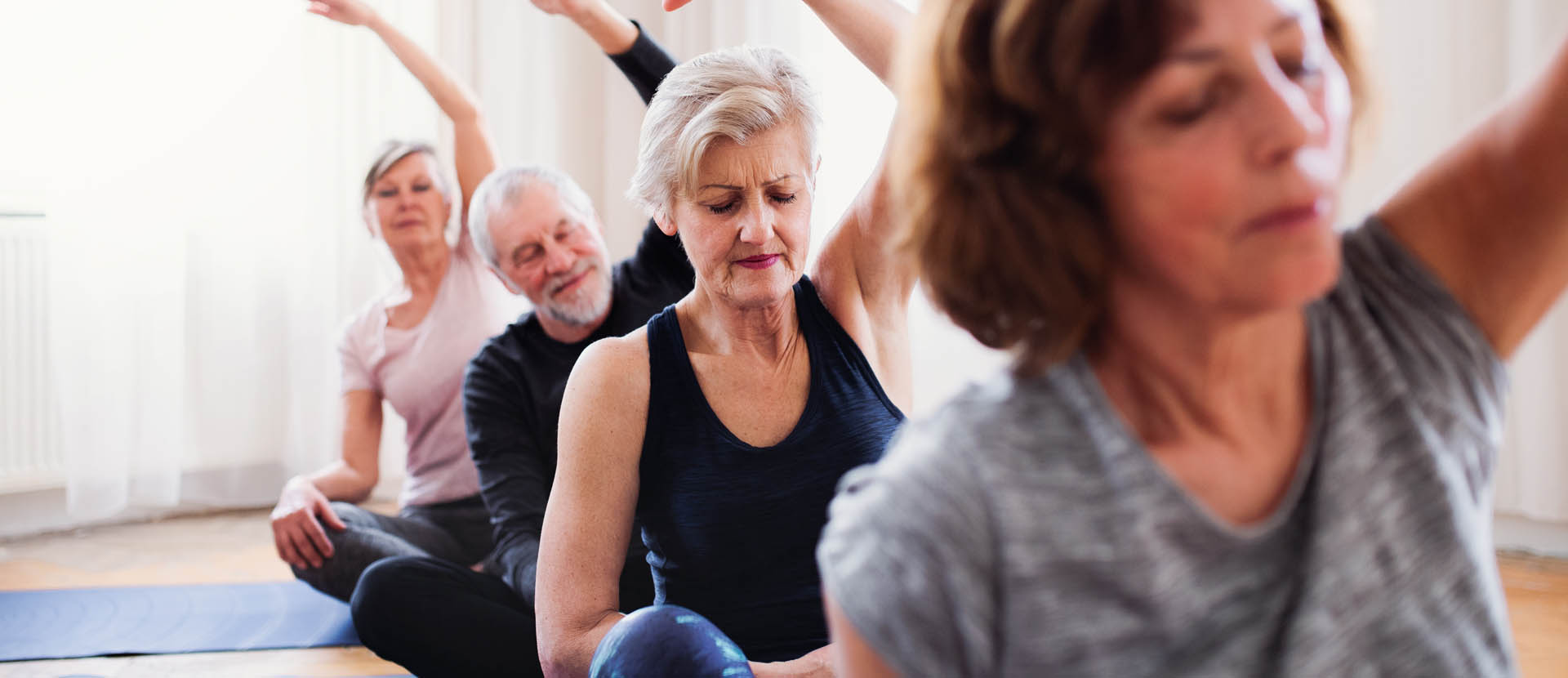Slow and Powerful Seated Yin Yoga: Three-Part Daoist Breath

Yin yoga and breathwork (pranayama) is a wonderful way for people of all ages to boost their energy levels, calm their central nervous system, and keep their bodies mobile and limber. However, this particular practice – the three-part Daoist Breath – is especially great for elderly people as it’s slower, more gentle and more accessible than other forms of yoga and physical exercise. Our resident Yin yoga teacher, Nicole, guides us through the practice.
How Does it Work?
The Daoist (or Taoist) breathing technique allows you to connect with your mind and body, slow down your breath and to release physical and emotional tension. While the focus on your inhalation and exhalation allows you to steady your mind, the movements that rhythmically accompany the breath allow you to work into the neck, shoulders, arms and across the back and spine to release tension while also encouraging circulation and mobility. This moving meditation can be done at any point throughout the day and the best part is that it can be done from a seated (or even standing) position.
How To Do it:
- Find a quiet place, the less distractions the better. Next, find a comfortable seated position. This will depend on the ability and mobility of the practitioner, for example, a comfortable seat can be on the floor, on a bed, a chair or a couch. Take your time and repeat as many rounds as you like.
- Close your eyes. Take a moment to ground yourself in your body and in the present moment.
- As you do this, lift your arms overhead while also lifting the chin and tilting your head up as if to gaze at your hands.
- As you do this, bring your hands behind your head, then press your palms outward to push energy out to the sides. Here, you may also drop your chin down towards your collarbone.
- Inhale while bending your elbows and bring your fingertips to lightly touch your shoulders. Now bring your head back to centre.
- Exhale while pushing your palms forward and rounding your back. Let your chin drop towards your chest.
- Inhale while turning your palms up and lifting the arms back overhead, looking up as you arch your upper back to find a slight backbend.
- Exhale while lowering your palms down in front of you, placing them either in your lap with a neutral spine, or placing the hands out in front of your lap while rounding/relaxing the spine forward. You may want to pause here and inhale, expand belly, exhale relax and repeat for a few respirations, or, you may want to start at step 1 immediately.
You can also watch this video for a visual explanation - to see what the movements look like in conjunction with the breath.
If you’ve never tried a breathwork practice like this, then why not introduce it to your elderly loved ones and perhaps, join them in a session or two. As with all things, the more frequently you do it, the less you have to think about the movements and the more meditative it becomes.
This practise should be safe for all to do, but it might be worth checking with your elderly parent or relative’s GP if there are any concerns.